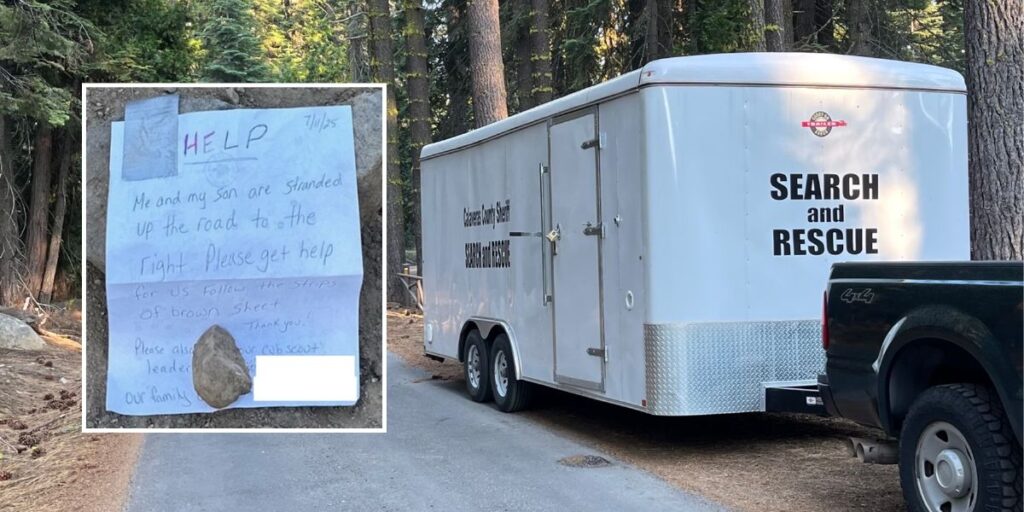Thanks to prompt decision-making, a handwritten letter, and prompt action by rescuers, a mother and her small boy were recovered after becoming lost in a California forest.
On Saturday, July 12, the Calaveras County Volunteer Search and Rescue (SAR) Team’s regular training exercise in the rough terrain close to Spicer Reservoir evolved into a real-life rescue operation.
Calaveras County Dispatch was notified just before 1:30 p.m. that a 49-year-old mother and her 9-year-old kid were missing from a trip to Camp Wolfeboro.
The reporting party claims that since leaving Sacramento the previous day, the couple has stopped communicating via phone, text, or check-in.
A deputy was dispatched right away to look into it out of concern for their safety. Luckily, the Search and Rescue (SAR) team was already in the area for training, so they began the search right away.
According to officials, the reporting party’s location-sharing app assisted in limiting the search area. The California Highway Patrol was also called in to provide air support.
A promising lead that led to a breakthrough in the hunt was a 911 text from campers in the area who said they had seen a car that fit the description of the missing family the day before. Officials say searches focused on the region after receiving this crucial tip.
Then, at a far-off crossroads, searchers found a handwritten letter early in the evening. It was a request for assistance from the mother who had gone missing.
An image of the note, which included the mother’s instructions for finding them, was published by the Calaveras County Sheriff’s Office.
“ASSIST. The note said, “My son and I are stranded without service and are unable to dial 911.” “Up the road to the right, we are in front. To receive assistance for us, please dial 911. I’m grateful.
Rescuers located the pair’s car about a mile down the road by following a string of identical notes placed along the way.
However, radio and cell signals were obstructed due to the remote location and dense forest canopy, “making standard radio or cell communication impossible.”
The rescue squad used an amateur radio frequency, or “HAM radio,” according to officials, to communicate.
A retired El Dorado County Communications Supervisor who was a HAM Operator monitoring frequencies from his house promptly answered their call after they broadcast “emergency traffic” on the HAM radio.
“This HAM operator then contacted the El Dorado 911 center, which provided the information to Calaveras Dispatch, and the SAR command post was notified,” officials stated.
The family was safely taken back to the command post, where they were reunited with worried loved ones, after rescuers used recovery equipment to liberate their vehicle.
According to officials, the rescue operation demonstrated how rapidly technology may malfunction in isolated locations.
The mother had been following a GPS route that took her onto isolated backroads, according to information later disclosed by authorities. Deep in the wilderness, the two lost their way as the signal failed.
According to officials, the two made a number of wise choices that helped ensure their safe recovery despite the perilous situation. They depended on fundamental survival skills, used warning lights at night, and left notes at crossroads. According to police, the young boy was notable for using a whistle in brief bursts to assist signal their location.
Authorities emphasized that telling someone about their journey and anticipated return was their most crucial action, as it enabled the prompt rescue to begin.





More Stories
A Mother’s Notes Save Lives: Rescue of Mom and Son in Remote California
A Mother’s Notes Save Lives: Rescue of Mom and Son in Remote California
A Mother’s Notes Save Lives: Rescue of Mom and Son in Remote California